Abstract
Hartman, Ronald E. (American Cyanamid Co., Pearl River, N.Y.) and Chester E. Holmlund. Binding of steroids by microorganisms. J. Bacteriol. 84:1254–1259. 1962.—Certain microorganisms, particularly higher fungi, are able to bind steroids. The steroids can be recovered by solvent extraction only after lyophilization of the cultures. There appears to be a relationship between steroid structure and avidity for the microbial-binding component from Penicillium canescens. Sterols which possess a long side chain and a 3β-hydroxy-5-ene group are particularly susceptible to microbial binding. The sterol-binding component of P. canescens is released by rupture of the cells. After liberation from the intact cells, it appears to be highly unstable in the presence of other cellular constituents.
Full text
PDF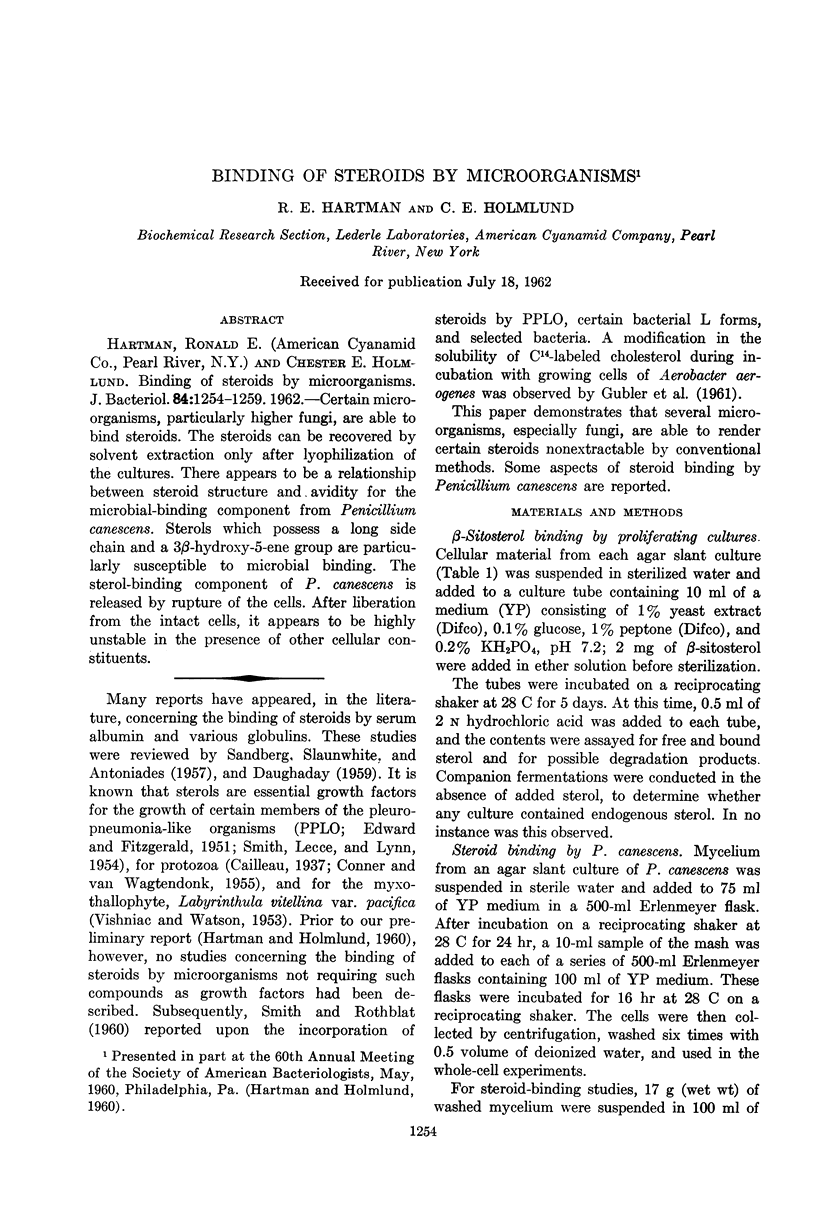
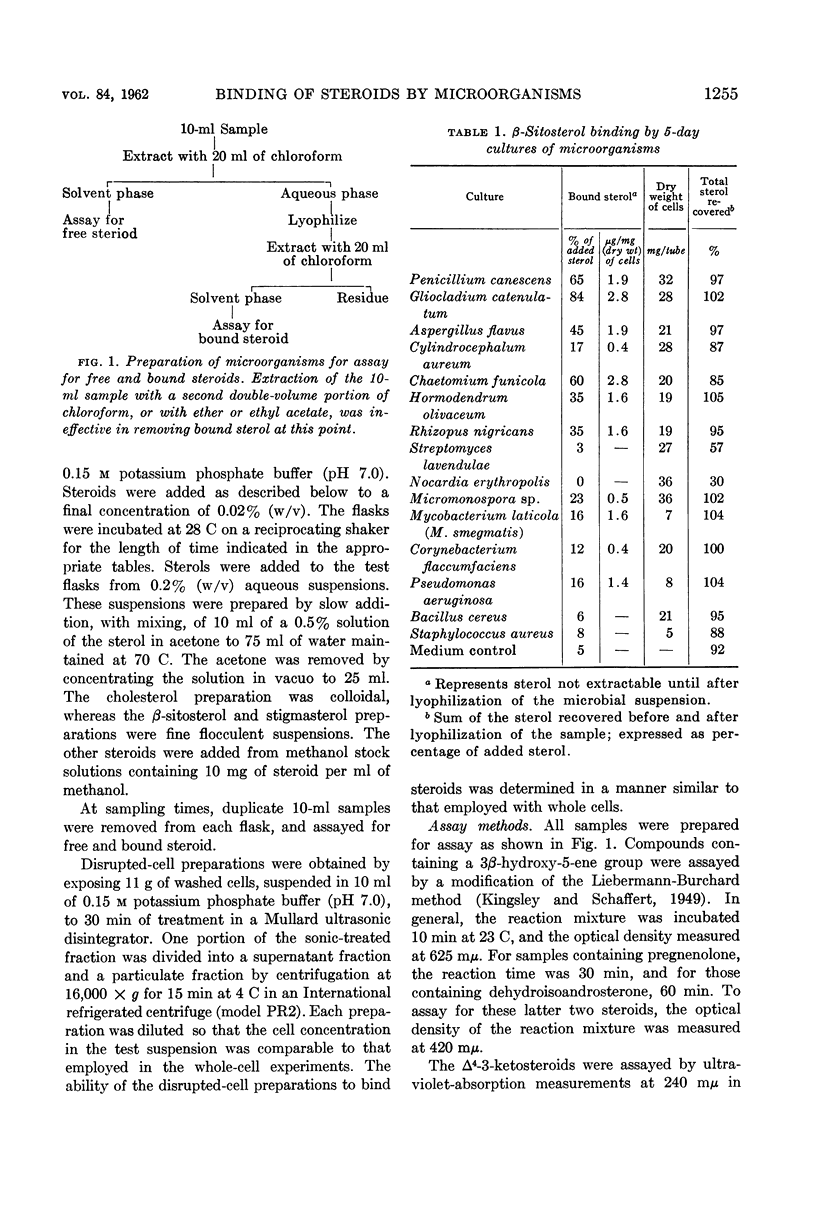
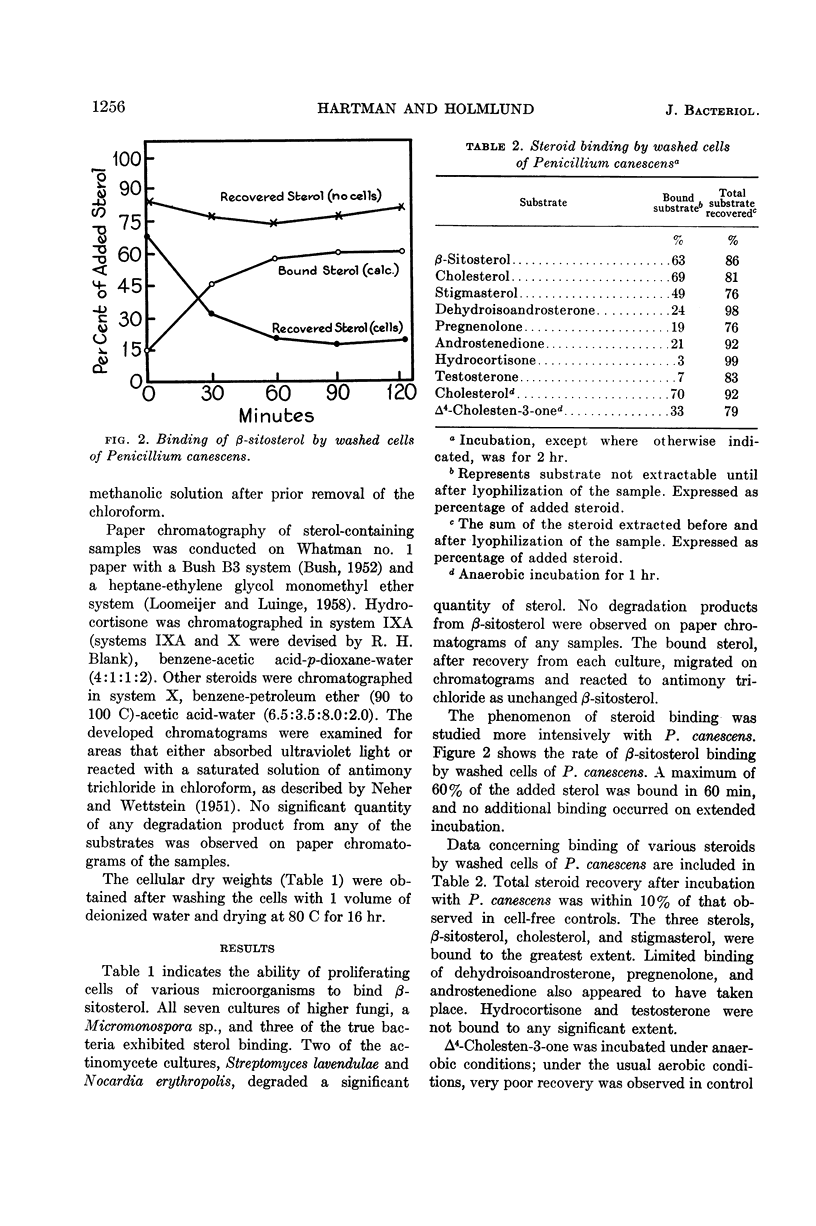
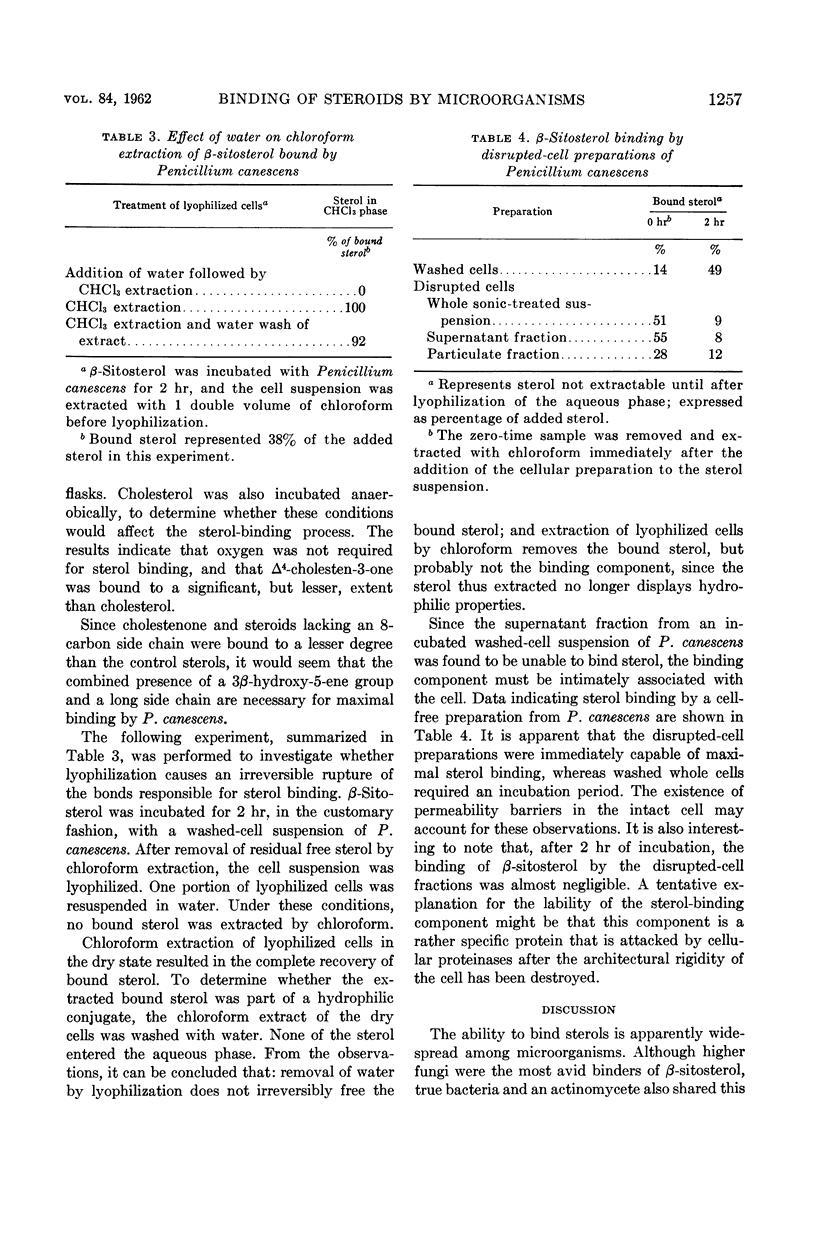
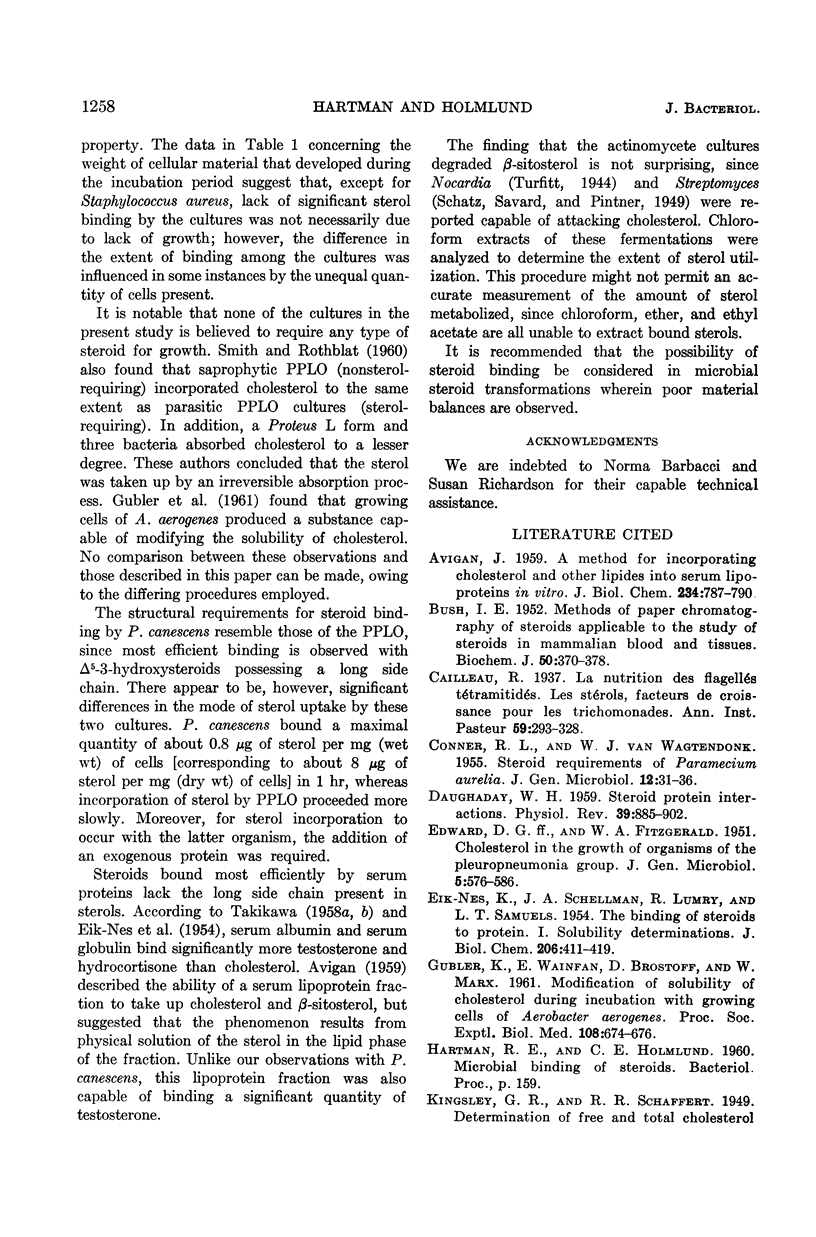
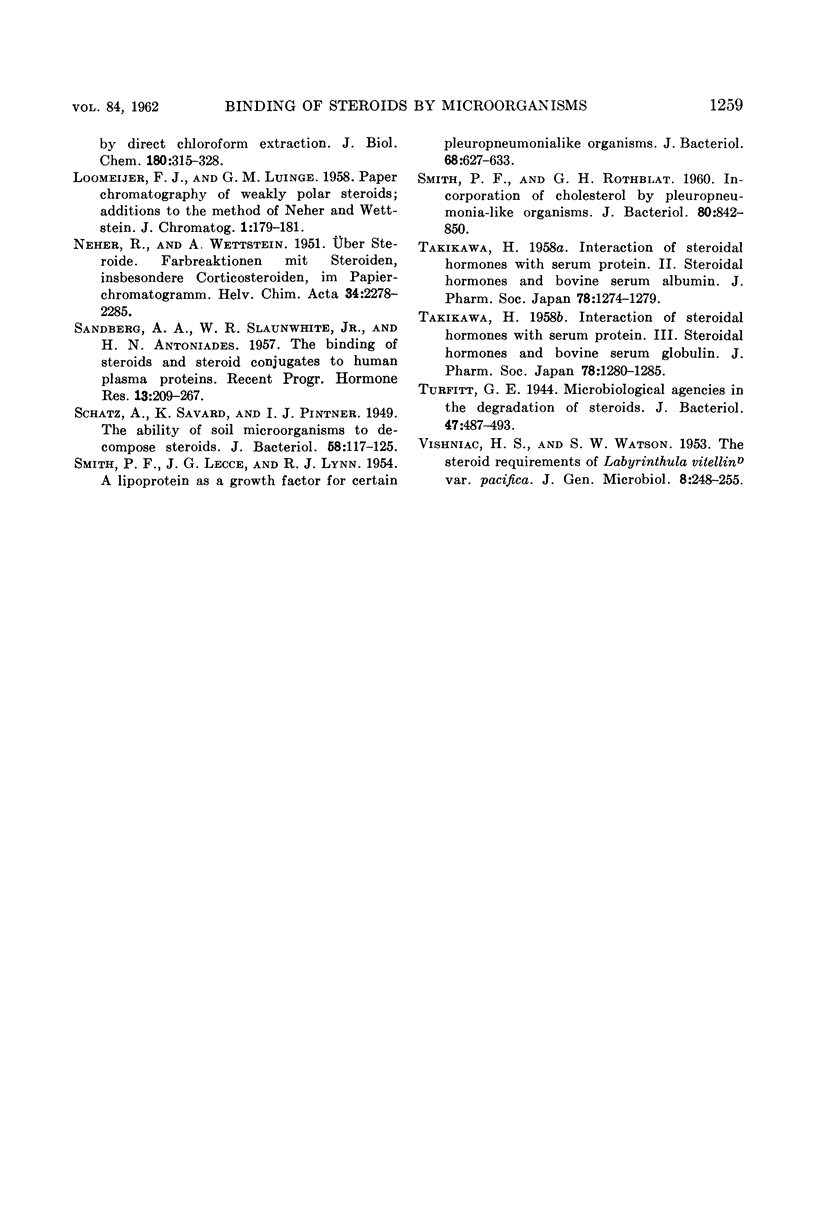
Selected References
These references are in PubMed. This may not be the complete list of references from this article.
- AVIGAN J. A method for incorporating cholesterol and other lipides into serum lipoproteins in vitro. J Biol Chem. 1959 Apr;234(4):787–790. [PubMed] [Google Scholar]
- BUSH I. E. Methods of paper chromatography of steroids applicable to the study of steroids in mammalian blood and tissues. Biochem J. 1952 Jan;50(3):370–378. doi: 10.1042/bj0500370. [DOI] [PMC free article] [PubMed] [Google Scholar]
- CONNER R. L., VAN WAGTENDONK W. J. Steroid requirements of Paramecium aurelia. J Gen Microbiol. 1955 Feb;12(1):31–36. doi: 10.1099/00221287-12-1-31. [DOI] [PubMed] [Google Scholar]
- DAUGHADAY W. H. Steroid-protein interactions. Physiol Rev. 1959 Oct;39:885–902. doi: 10.1152/physrev.1959.39.4.885. [DOI] [PubMed] [Google Scholar]
- EDWARD D. G., FITZGERALD W. A. Cholesterol in the growth of organisms of the pleuropneumonia group. J Gen Microbiol. 1951 Aug;5(3):576–586. doi: 10.1099/00221287-5-3-576. [DOI] [PubMed] [Google Scholar]
- EIK-NES K., SCHELLMAN J. A., LUMRY R., SAMUELS L. T. The binding of steroids to protein. I. Solubility determinations. J Biol Chem. 1954 Jan;206(1):411–419. [PubMed] [Google Scholar]
- GUBLER K., WAINFAN E., BROSTOFF D., MARX W. Modification of solubility of cholesterol during incubation with growing cells of Aerobacter aerogenes. Proc Soc Exp Biol Med. 1961 Dec;108:674–676. doi: 10.3181/00379727-108-27031. [DOI] [PubMed] [Google Scholar]
- SANDBERG A. A., SLAUNWHITE W. R., Jr, ANTONIADES H. N. The binding of steroids and steroid conjugates to human plasma proteins. Recent Prog Horm Res. 1957;13:209–267. [PubMed] [Google Scholar]
- SMITH P. F., LECCE J. G., LYNN R. J. A lipoprotein as a growth factor for cortain pleuropneumonialike organisms. J Bacteriol. 1954 Nov;68(5):627–633. doi: 10.1128/jb.68.5.627-633.1954. [DOI] [PMC free article] [PubMed] [Google Scholar]
- Schatz A., Savard K., Pintner I. J. THE ABILITY OF SOIL MICROORGANISMS TO DECOMPOSE STEROIDS. J Bacteriol. 1949 Aug;58(2):117–125. doi: 10.1128/jb.58.2.117-125.1949. [DOI] [PMC free article] [PubMed] [Google Scholar]
- Smith P. F., Rothblat G. H. INCORPORATION OF CHOLESTEROL BY PLEUROPNEUMONIA-LIKE ORGANISMS. J Bacteriol. 1960 Dec;80(6):842–850. doi: 10.1128/jb.80.6.842-850.1960. [DOI] [PMC free article] [PubMed] [Google Scholar]
- Turfitt G. E. Microbiological Agencies in the Degradation of Steroids: I. The Cholesterol-Decomposing Organisms of Soils. J Bacteriol. 1944 Jun;47(6):487–493. doi: 10.1128/jb.47.6.487-493.1944. [DOI] [PMC free article] [PubMed] [Google Scholar]
- VISHNIAC H. S., WATSON S. W. The steroid requirements of Labyrinthula vitellina var. pacifica. J Gen Microbiol. 1953 Apr;8(2):248–255. doi: 10.1099/00221287-8-2-248. [DOI] [PubMed] [Google Scholar]


